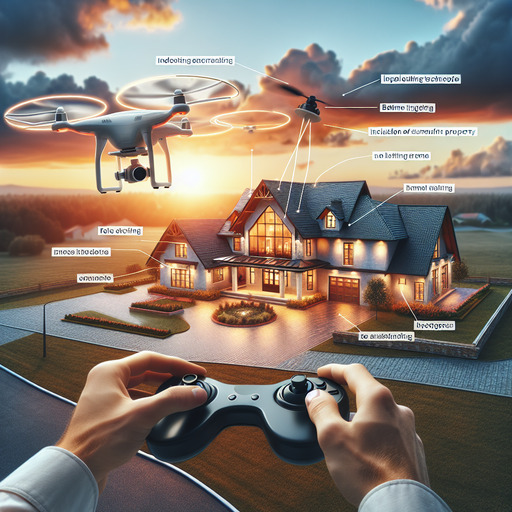
-
Table of Contents
Unlock the secrets to capturing stunning aerial photography for real estate and elevate your listings to new heights! Discover expert tips and techniques now. Learn More
Introduction
Capturing stunning aerial photography for real estate involves a blend of technical skill, artistic vision, and an understanding of the property market. Aerial photography provides a unique perspective that can highlight the features of a property and its surroundings, making it an invaluable tool for real estate marketing. To achieve breathtaking aerial shots, one must consider several key factors: selecting the right equipment, understanding the principles of composition and lighting, adhering to legal regulations, and mastering post-processing techniques. This guide will delve into each of these aspects, offering practical tips and insights to help you elevate your real estate photography to new heights.
How to Capture Stunning Aerial Photography for Real Estate: Essential Tips and Techniques
Capturing stunning aerial photography for real estate requires a blend of technical skill, artistic vision, and an understanding of the property’s unique features. To begin with, selecting the right equipment is crucial. Drones equipped with high-resolution cameras are the go-to choice for aerial photography. Models such as the DJI Phantom or Mavic series offer excellent image quality and stability, which are essential for capturing clear, sharp images from above. Additionally, investing in a drone with a gimbal can significantly enhance the smoothness of your shots, reducing the risk of blurry images caused by vibrations.
Once you have the right equipment, it’s important to plan your shoot meticulously. Start by researching the property and its surroundings. Understanding the layout, key features, and the best angles to highlight can make a significant difference in the final images. For instance, capturing a sprawling estate from a high altitude can showcase its grandeur, while a lower altitude shot might be better for highlighting intricate landscaping details. Moreover, consider the time of day for your shoot. Early morning or late afternoon, often referred to as the golden hours, provide soft, warm lighting that can enhance the visual appeal of your photos.
Weather conditions also play a pivotal role in aerial photography. Clear skies are ideal, as they provide the best lighting and visibility. However, slightly overcast conditions can also be beneficial, as they diffuse the sunlight and reduce harsh shadows. It’s essential to check the weather forecast and plan your shoot accordingly to avoid any disruptions caused by rain, strong winds, or other adverse conditions.
In addition to planning, mastering the technical aspects of drone operation is vital. Familiarize yourself with the drone’s controls and practice flying in different conditions to build confidence and skill. Understanding the basics of photography, such as composition, exposure, and focus, is equally important. Use the rule of thirds to create balanced and visually appealing shots, and experiment with different angles and perspectives to find the most flattering views of the property.
Post-processing is another critical step in creating stunning aerial photography. Editing software like Adobe Lightroom or Photoshop can help enhance your images by adjusting brightness, contrast, and color balance. Additionally, removing any unwanted elements, such as power lines or shadows, can further improve the overall quality of your photos. However, it’s important to strike a balance and avoid over-editing, as this can result in unnatural-looking images.
Safety and legal considerations should never be overlooked when capturing aerial photography for real estate. Ensure that you are aware of and comply with local regulations regarding drone usage. This may include obtaining necessary permits, adhering to no-fly zones, and maintaining a safe distance from people and property. Additionally, always conduct a pre-flight check to ensure that your drone is in good working condition and that the battery is fully charged.
In conclusion, capturing stunning aerial photography for real estate involves a combination of the right equipment, careful planning, technical proficiency, and post-processing skills. By paying attention to these essential tips and techniques, you can create visually compelling images that highlight the unique features of a property and attract potential buyers. Whether you are a seasoned professional or a novice photographer, continuous learning and practice are key to mastering the art of aerial photography and delivering exceptional results.
Q&A
1. **What equipment is essential for capturing stunning aerial photography for real estate?**
– A high-quality drone with a good camera (e.g., DJI Phantom 4 Pro, Mavic 2 Pro)
– Extra batteries for extended flight time
– ND filters to manage exposure in bright conditions
– A tablet or smartphone for live view and control
– A gimbal for stabilized shots
– A high-capacity memory card
– A drone backpack or case for safe transport
– FAA certification (if required in your area) and adherence to local regulations